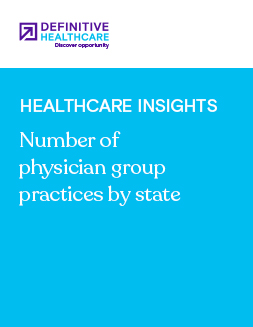Healthcare Insights
How many accountable care organizations (ACOs) are in each state?
An accountable care organization (ACO) is a healthcare delivery model that aims to improve the quality and coordination of care for patients while reducing costs. It is a network of healthcare providers, including doctors, hospitals, and other healthcare professionals, who voluntarily come together to provide coordinated care to a specific population of patients.
The primary goal of an ACO is to promote collaboration and integration among different healthcare providers to deliver more effective and efficient care. By working together, ACO members strive to improve patient outcomes, enhance patient satisfaction, and achieve cost savings by avoiding unnecessary duplication of services or hospital admissions.
Using data from our ConnectedCareView product, the heatmap below shows how many ACOs are in each state across the U.S. to date. It’s important to note that not all states report how many ACOs they have and may use different terminology when referring to their ACO initiatives.
The number of ACOs by state
Fig 1. Heatmap shows the number of ACOs by state. Data is from the Definitive Healthcare’s ConnectedCareView product. Data accessed in May 2024.
How many states have ACOs?
Definitive Healthcare tracks more than 1,800 active ACOs across the U.S. Our list of accountable care organizations by state highlights the states with the most and fewest ACOs.
| Rank | State | Number of ACOs | Explore dataset |
|---|---|---|---|
| 1 | California | 151 | Explore |
| 2 | Maryland | 128 | Explore |
| 3 | Massachusetts | 120 | Explore |
| 4 | Florida | 119 | Explore |
| 5 | Texas | 119 | Explore |
| 6 | New York | 106 | Explore |
| 7 | Tennessee | 86 | Explore |
| 8 | Colorado | 78 | Explore |
| 9 | Illinois | 65 | Explore |
| 10 | Pennsylvania | 65 | Explore |
| 11 | Arizona | 64 | Explore |
| 12 | Washington | 64 | Explore |
| 13 | Ohio | 59 | Explore |
| 14 | New Jersey | 58 | Explore |
| 15 | Michigan | 51 | Explore |
| 16 | North Carolina | 49 | Explore |
| 17 | Virginia | 48 | Explore |
| 18 | Connecticut | 45 | Explore |
| 19 | Oregon | 40 | Explore |
| 20 | Minnesota | 35 | Explore |
| 21 | Georgia | 32 | Explore |
| 22 | Missouri | 32 | Explore |
| 23 | Maine | 25 | Explore |
| 24 | Iowa | 23 | Explore |
| 25 | Indiana | 20 | Explore |
| 26 | Nebraska | 17 | Explore |
| 27 | Wisconsin | 17 | Explore |
| 28 | Kansas | 15 | Explore |
| 29 | Idaho | 13 | Explore |
| 30 | Louisiana | 13 | Explore |
| 31 | New Hampshire | 13 | Explore |
| 32 | South Carolina | 13 | Explore |
| 33 | Utah | 12 | Explore |
| 34 | Kentucky | 11 | Explore |
| 35 | Nevada | 11 | Explore |
| 36 | Oklahoma | 8 | Explore |
| 37 | Rhode Island | 8 | Explore |
| 38 | Vermont | 8 | Explore |
| 39 | Delaware | 6 | Explore |
| 40 | Montana | 5 | Explore |
| 41 | Arkansas | 4 | Explore |
| 42 | Alabama | 3 | Explore |
| 43 | Hawaii | 3 | Explore |
| 44 | Mississippi | 3 | Explore |
| 45 | District of Columbia | 2 | Explore |
| 46 | South Dakota | 2 | Explore |
| 47 | West Virginia | 2 | Explore |
| 48 | Alaska | 1 | Explore |
| 49 | North Dakota | 1 | Explore |
| 50 | New Mexico | 1 | Explore |
Fig. 2. Data is from Definitive Healthcare’s ConnectedCareView product. Data accessed May 2024.
California has the highest number of ACOs with 151, and Maryland follows closely with 128 ACOs. Massachusetts, Florida, and Texas have 120, 119, and 119 ACOs respectively. New York has 106 ACOs. The numbers gradually decrease across other states, with North Dakota, New Mexico, and Alaska having the lowest count with only one ACO each.
In general, as the population of a state increases, the number of ACOs also tends to increase, but the relationship is not extremely strong. While states with larger populations might be expected to have more ACOs due to greater healthcare demand, other factors such as state regulations, healthcare delivery models, and provider participation rates can also influence ACO formation.
For a deeper understanding of ACOs, consider checking out the top 25 ACOs ranked by gross savings and the top 25 ACOs ranked by patient population.
Are ACOs only for Medicare?
No. While ACOs were originally established as a payment model for Medicare, many private sector health plans have launched their own ACO networks. These ACOs are usually offered as distinct insurance product options available to individuals and employers. Often, they are offered through a health maintenance organization or a preferred provider organization.
Learn more
Healthcare Insights are developed with healthcare commercial intelligence from the Definitive Healthcare platform. Want even more insights? Start a free trial today and get access to the latest healthcare commercial intelligence on hospitals, physician groups, ACOs, and other providers.



